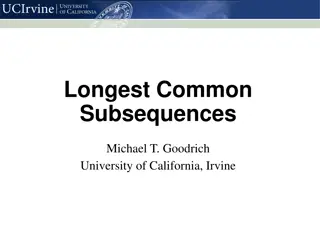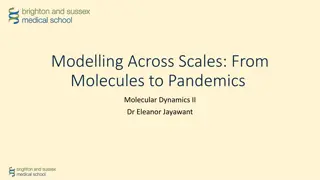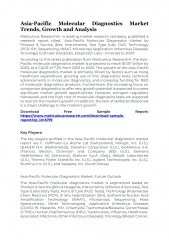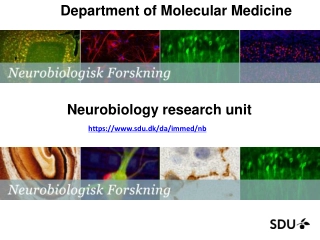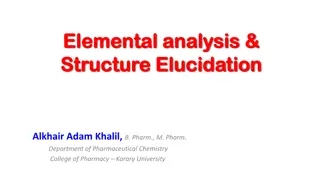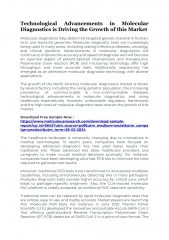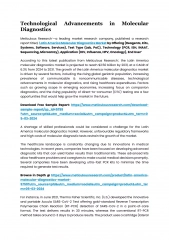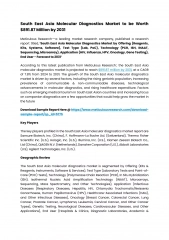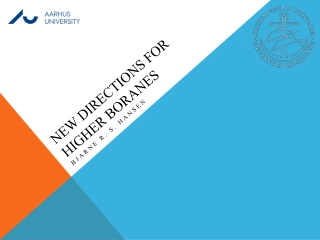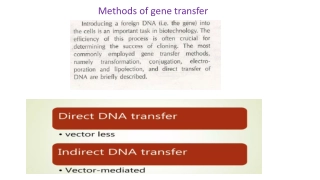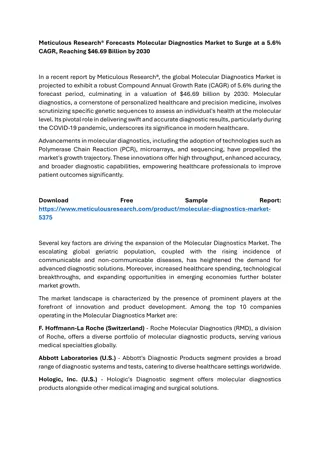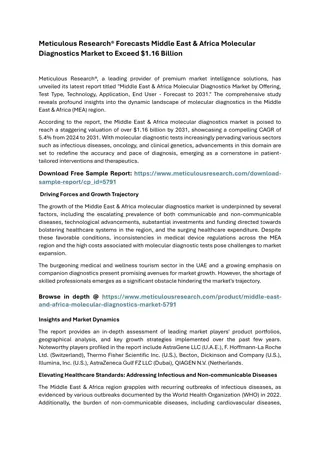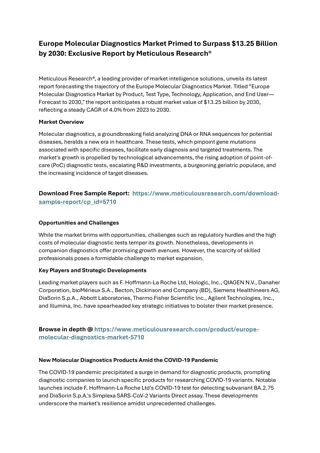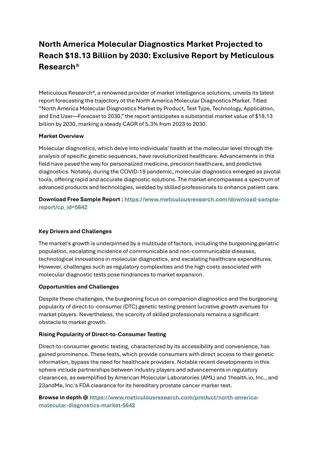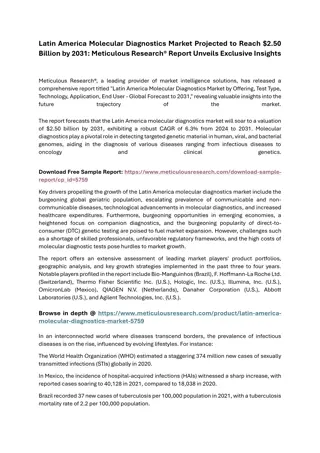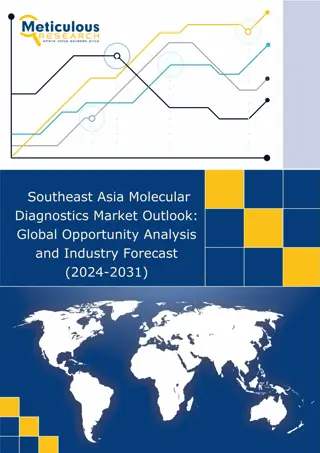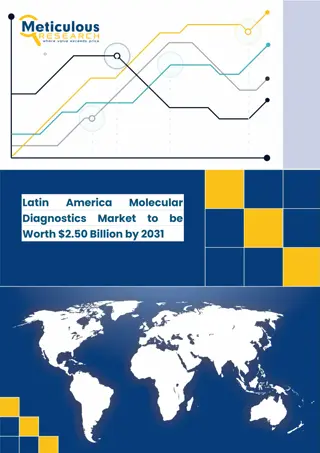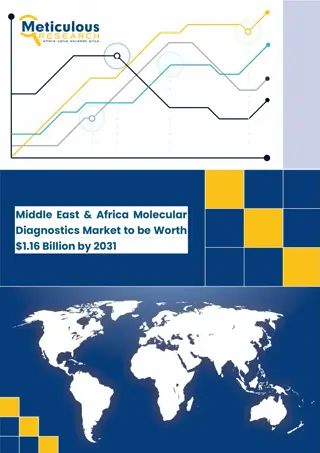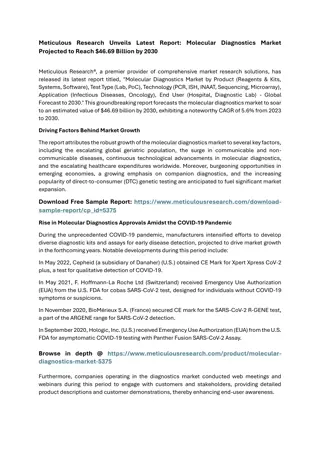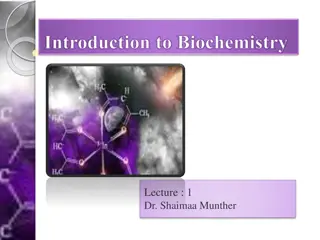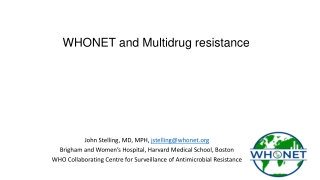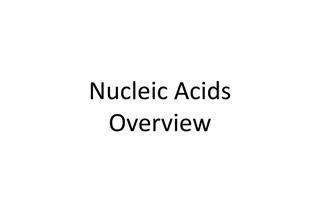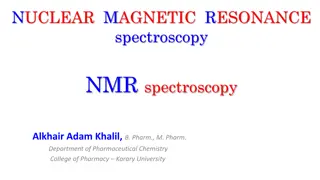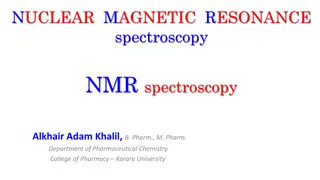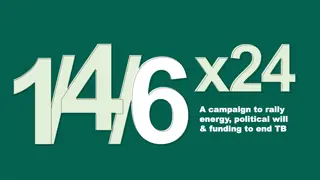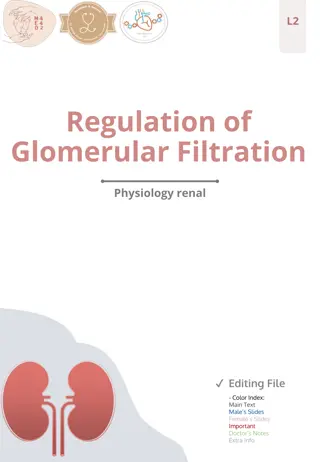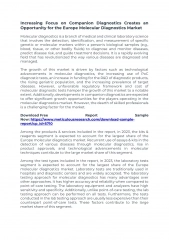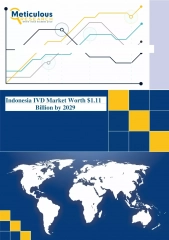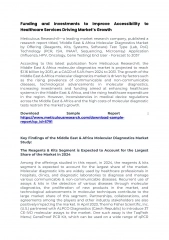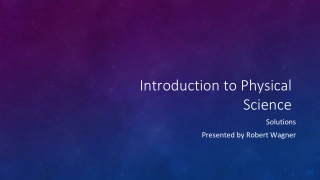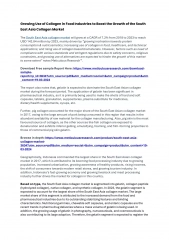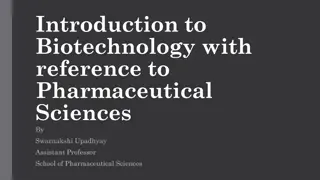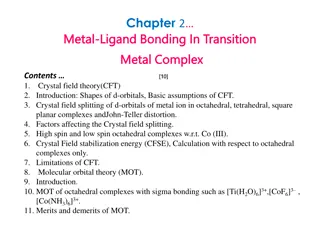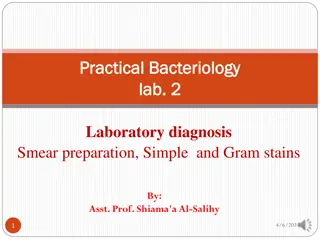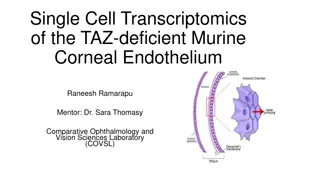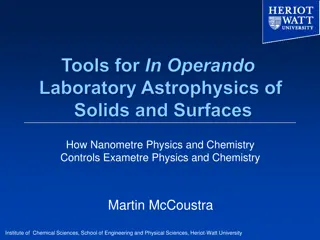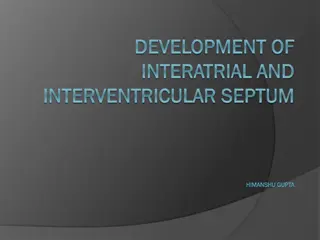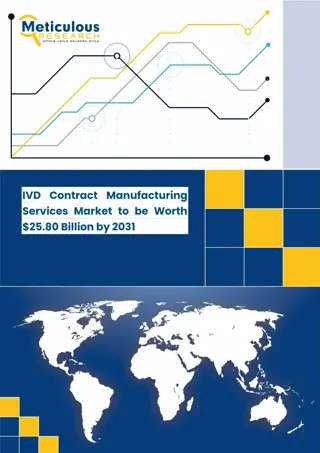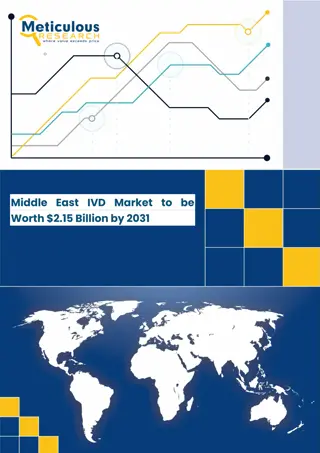Understanding Molecular Docking in Bioinformatics
Explore the world of molecular docking in bioinformatics through in silico approaches, learning about protein-ligand interactions, modes of docking, different docking approaches, and the theory of enzymes. Discover how this computational method helps predict the binding affinity and conformation of molecules, aiding in drug discovery and understanding molecular interactions.
Understanding Molecular Docking in Bioinformatics
PowerPoint presentation about 'Understanding Molecular Docking in Bioinformatics'. This presentation describes the topic on Explore the world of molecular docking in bioinformatics through in silico approaches, learning about protein-ligand interactions, modes of docking, different docking approaches, and the theory of enzymes. Discover how this computational method helps predict the binding affinity and conformation of molecules, aiding in drug discovery and understanding molecular interactions.. Download this presentation absolutely free.
Presentation Transcript
Methods of Bioinformatics Session 12 Interaction Bioinformatics: Molecular Docking
Related Learning Outcomes Related Learning Outcomes By the end of this session, students will be able to: To understand The docking analysis
Outline Outline 1. Molecular Docking Definition 2. Theory of Enzyme 3. Thermodynamics and Docking 4. Tasks of Docking 5. Practice of Docking 6. Conclusion
Methods of Bioinformatics Session 12 Interaction Bioinformatics: Molecular Docking Section number : 1 Molecular Docking Definition
What? What? In silico (computer-based) approach The approach is totally done in a computer. Yet the data is not always Identification of bound conformation Check how your chemicals bind to each other. In which part? How is the conformation? Prediction of binding affinity How strong the bond is? Docking vs. (Virtual) Screening Similar but not the same
Protein-Ligand Docking Protein-Protein Docking
Modes of Docking Modes of Docking 2 Modes : Respective: How does your molecule bind? What is its mode of action? What might be the reaction mechanism? Prospective: What compounds might be good leads? What compound(s) should you make?
Docking approaches Docking approaches in a nutshell in a nutshell Fast, Simple Initially Receptor (protein) and ligand rigid Most current approaches Receptor rigid, ligand flexible Advanced approaches Receptor (to a degree) and ligand flexible Slow, Complex
Methods of Bioinformatics Session 12 Interaction Bioinformatics: Molecular Docking Section number : 2 Theory of Enzyme
Key Key- -lock Theory lock Theory Specific action of a protein with a single substrate (Postulated by Emil Fischer in 1894) Lock is enzyme, key is substrate Only the CORRECT SIZE and CONFORMATION key (substrate) will fit to The keyhole of the lock (enzyme)
Induced Fit Theory Induced Fit Theory Not all experimental evidence can be adequately explained using the key- lock theory Assumes that the substrate plays a role in determining the final shape of the enzyme and that the enzyme is PARTIALLY FLEXIBLE. It explains some compound can bind but no reaction occurs; enzyme is distorted too much due to binding Others are too small to induce proper alignment Only the proper substrate can induce proper alignment to the active site
Both theories underline the different types of docking Complexity on both receptor and ligand also play a pivotal role
Methods of Bioinformatics Session 12 Interaction Bioinformatics: Molecular Docking Section number : 3 Thermodynamics and Docking
Molecular Recognition Molecular Recognition The central phenomenon in biochemistry Enzyme with substrate Protein receptor and ligand Antigen and antibody Etc. How to investigate those? Molecular Docking Free energy calculations QM/MM (quantum mechanics/molecular mechanics) method OUR FOCUS TODAY
Some definitions first Some definitions first pKd measures tightness of binding pKi measures ability to inhibit Gibbs free energy of binding: Mechanisms: Competitive inhibition (most typical in docking) Allosteric inhibition (inhibitors bind to different pocket to inhibit enzyme) Allosteric activation (activators bind to different pocket to activate enzyme)
Energy binding?? Energy binding?? Molecular recognition based on enthalpy and entropy Enthalpy: Direct interactions between ligand, solvent, proteins, ions Ligand-protein Ligand-solvent Protein-solvent Conformational changes during binding
Energy binding?? Energy binding?? Entropy: Rotational and translational entropy Conformational entropy Solvent reorganization (based on protein or ligand hydrophobicity) Vibrational entropy Don t worry, the software will calculate for you, you just need to know what is the energy meaning
Methods of Bioinformatics Session 12 Interaction Bioinformatics: Molecular Docking Section number : 4 Task of Docking
What What is is docking docking exactly? exactly? Finding the right pose of ligand and protein! Making difference between right and wrong docking poses Making difference between high and not so high affinity compounds
3 tasks of Molecular Docking 3 tasks of Molecular Docking
Usage Usage Reproduce the binding mode of x- ray ligand Predicting the binding mode of a known active ligands Predicting the binding affinities of related compounds from a known active series Identifying new ligands using virtual screening
Docking approaches Docking approaches Initially Receptor (protein) and ligand rigid Search the relative orientation of 2 molecules with the lowest energy Conformational analysis needed for both molecules Software: FLOG Most current approaches Receptor rigid, ligand flexible Need several protein structures Software: GOLD, Autodock, GLIDE Advanced approaches Receptor (to a degree) and ligand flexible Induced-fit method (GLIDE, MOE) Sidechain flexibility (Surf-flex, GOLD, Autodock)
Docking workflow Docking workflow Binding mode prediction Search algorithm to find the docking complex structure by scoring function Consume lots of CPU-time Binding affinity prediction (ranking) Scoring function to discriminate correct docking complex structure from incorrect ones Strict control of false positives No consensus (could be more than 1 result)
Scoring functions Scoring functions Scoring functions are used to estimate free energies of binding Force-field scoring (electrostatic + vdW (+ solvation) scoring) GoldScore, DOKC, AutoDock Empirical scoring (based on the conformation binding) ChemScore, Glide SP/XP Knowledge- based scoring (based on known protein-ligand complex) PMF, DrugScore Consensus scoring (combine result from rescoring experiment)
(Some) Challenges with docking (Some) Challenges with docking Docking method predicts the experimental pose about 70% of the time Predicting the binding affinities of a diverse set of molecules is very difficult Scoring method is enormous Search space is high dimensional; both molecules are very flexible Scoring method is still imperfect-> not 100% replicate the experimental or too heavy in taking computational resource About 30 docking programs
Docking Packages Docking Packages Free AutoDock (Art Olsen, David Goodsell, Scripps) UCSF DOCK (Kuntz Group) Commercial Glide (Schrodinger) GOLD (CCDC) FlexX(BiosolveIT) ICM (Molsoft) Surflex(Tripos) Webserver (A LOT)
Methods of Bioinformatics Session 12 Interaction Bioinformatics: Molecular Docking Section number : 5 Practice of Docking
What you need to do a docking What you need to do a docking Protein structure (for receptors or for protein-protein interaction) Chemical compound structures (for ligands) Molecular docking software Visualizer software (if the docking software doesn t have this)
Good docking target? Good docking target? Deep, well-defined pocket Shallow pockets have too many options Sites for specific interactions Many charge-charge or h-bonding sites Mostly hydrophobic; vdW interactions bad Well ordered side-chains See Ramachandran Plot to see if your protein is good or not
Receptor preparation Receptor preparation Dependent on docking program used (some programs has its own set of rules) Structure and docking site selection Add charges or add hydrogen atoms, some programs more sensitive to positions than other Remove/include waters, cofactors, metals Pre-docking refinement Remember to consider missing residues or atoms (especially if getting data from PDB file)
Ligand Preparation Ligand Preparation Input structures (extract from PDB, draw, convert from SMILES data) Add bond orders Generate isomers if chiral centers Calculate charges Predict pKa s for each potential charged atom Generate a structure for each charge combination for a given pH range (e.g., 5-9) Minimize structures Generally using a molecular mechanics forcefield For Screening, download a public sets from ZINC (available compounds) or PubChem
Docking accuracy Docking accuracy Accuracy measures Generally, take average RMSD (root mean square deviation) comparing to crystal structures or experimental data Better analyses consider interactions (like what kind of interaction between the protein residue and some part of the ligand) In the end of the day, docking analysis is moot without any follow up as it only predicts the interaction. Follow up could be Molecular dynamics or wet lab analysis
Other way: REDOCK! Other way: REDOCK! You can use DECOY substances (other similar ligand but has different properties, so it should NOT bind to your protein) Redock with the natural ligand of the protein.
Methods of Bioinformatics Session 12 Interaction Bioinformatics: Molecular Docking Section number : 6 Conclusion
Conclusion Conclusion Docking method is useful to determine the fitness of ligand-protein binding in accordance with the thermodynamics law Docking method could be helpful in drug and vaccine design
References References Dar AM, Mir S (2017) Molecular Docking: Approaches, Types, Applications and Basic Challenges. J Anal Bioanal Tech 8: 356. doi: 10.4172/2155-9872.1000356 Molecules 2015, 20, 13384-13421; doi:10.3390/molecules200713384 Meng et al. Molecular Docking: A powerful approach for structure- based drug discovery. Curr Comput Aided Drug Des. 2011 June 1; 7(2): 146 157.


![Read⚡ebook✔[PDF] Linking the Space Shuttle and Space Stations: Early Docking Te](/thumb/21519/read-ebook-pdf-linking-the-space-shuttle-and-space-stations-early-docking-te.jpg)
